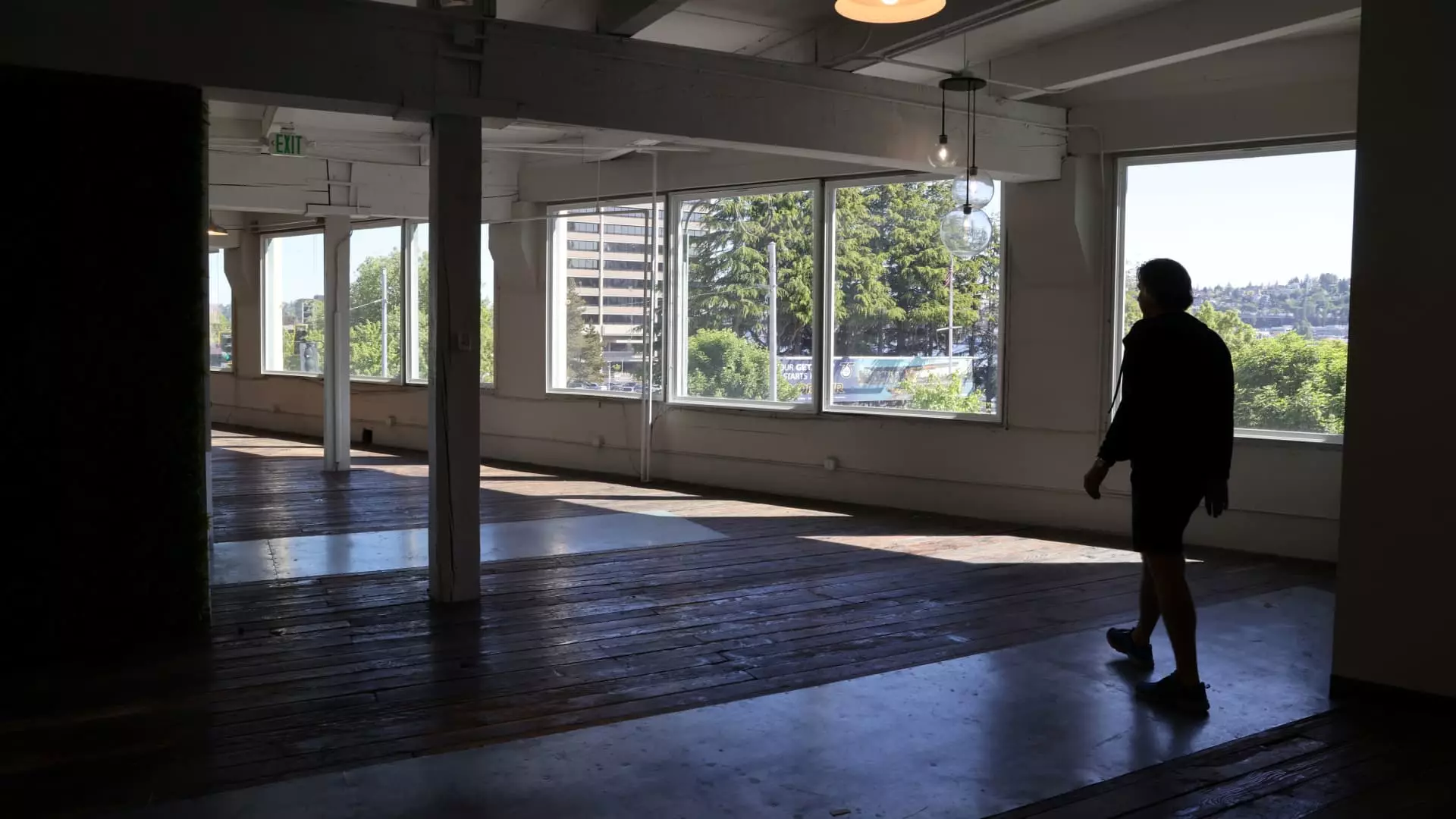The American office market is undergoing a profound transformation, marked by unprecedented challenges that have turned once-proud skyscrapers into hollow monuments of a bygone era. After years of stagnation, 2023 has revealed a startling trend: for the first time in decades, the demolition and conversion of office spaces are outpacing new constructions. As reported by CBRE Group, this seismic shift is not just a blip on the radar; it reflects a fundamental rethinking of what workspaces mean in an increasingly hybridized world.
The commercial real estate landscape is crumbling under the weight of high vacancy rates and a workforce that has embraced remote work, forever altering the traditional 9-to-5 paradigm. Office vacancies are at a staggering 19%, a statistic that signifies not just an oversupply of space but a profound disconnect between commercial landlords and the actual needs of today’s workforce.
The Rise of Remote Work and Its Aftermath
The pandemic catalyzed a seismic shift in workplace dynamics, propelling remote work from a fringe benefit to a viable option for many workers. This trend has not only redefined work-life balance but has also cast a long shadow over the office market, leaving it to grapple with an existential crisis. As more companies adopt flexible work policies, employees are discovering the joys of reduced commuting times and improved quality of life, leaving traditional offices increasingly irrelevant.
However, as employers strive to entice employees back to physical workspaces, they face resistance. How do you persuade someone who has comfortably worked from home for years to return to a sterile, uninspiring cubicle? It’s no surprise that the effects of this cultural shift are manifesting in the physical realm; buildings that once housed bustling offices are now standing idle or being repurposed.
Adaptation or Decline?
The statistics are telling: 23.3 million square feet of office space is set for demolition or conversion this year, while only 12.7 million square feet of new office space will be completed. An alarming imbalance that is difficult to overlook. While proponents of this transformation argue that it will lead to efficiency and creativity, the reality is far more complex.
Mike Watts from CBRE suggests that this net reduction could benefit property owners by lowering vacancy rates. But one has to wonder: at what cost? The evolution toward “higher and best use” sounds promising in theory, but does it imply that we are simply papering over deeper issues in the commercial real estate market? Converting obsolete spaces into mixed-use developments might breathe new life into certain neighborhoods, but it will not rectify the underlying problem of dwindling demand for traditional office spaces.
The Uncertain Future of Office Real Estate
One area that is seeing increased activity is office conversions to residential spaces, with an estimated potential of 85 million square feet waiting to be reimagined. While this may seem like a silver lining in a dim landscape, optimism must be carefully measured. The hurdles that developers face—like escalating construction costs and a decreasing pool of viable buildings—cast a long shadow over these projects. As the market shifts, those who once thrived in commercial real estate are left scrambling to adapt.
Additionally, the implications of this shift extend beyond commercial real estate to impact urban planning and economic equity. Mixed-use developments promise vibrancy and attract people, but the concern remains: who benefits from these new spaces? If gentrification follows, will it lead to displacement of long-standing community members? The conversion trend, while innovative, risks entrenching existing inequalities if not approached with a keen awareness of social responsibility.
Summing Up the Distress
The office market may be inching toward recovery, yet it does so on unsteady ground, supported by a shallow increase in leasing activity and rising demand paired with dwindling supply. Real estate investment trusts like Vornado and SL Green hold that prime office locations will see rent recovery, a claim that brings little comfort to the larger narrative of transformation.
The path ahead is fraught with challenges, yet the opportunities for reimagining urban spaces are tantalizingly within reach. But for the commercial landlords and developers navigating this treacherous landscape, the question remains: are they equipped to adapt to these profound changes, or are they chasing an elusive dream of returning to a past that no longer exists?


Leave a Reply